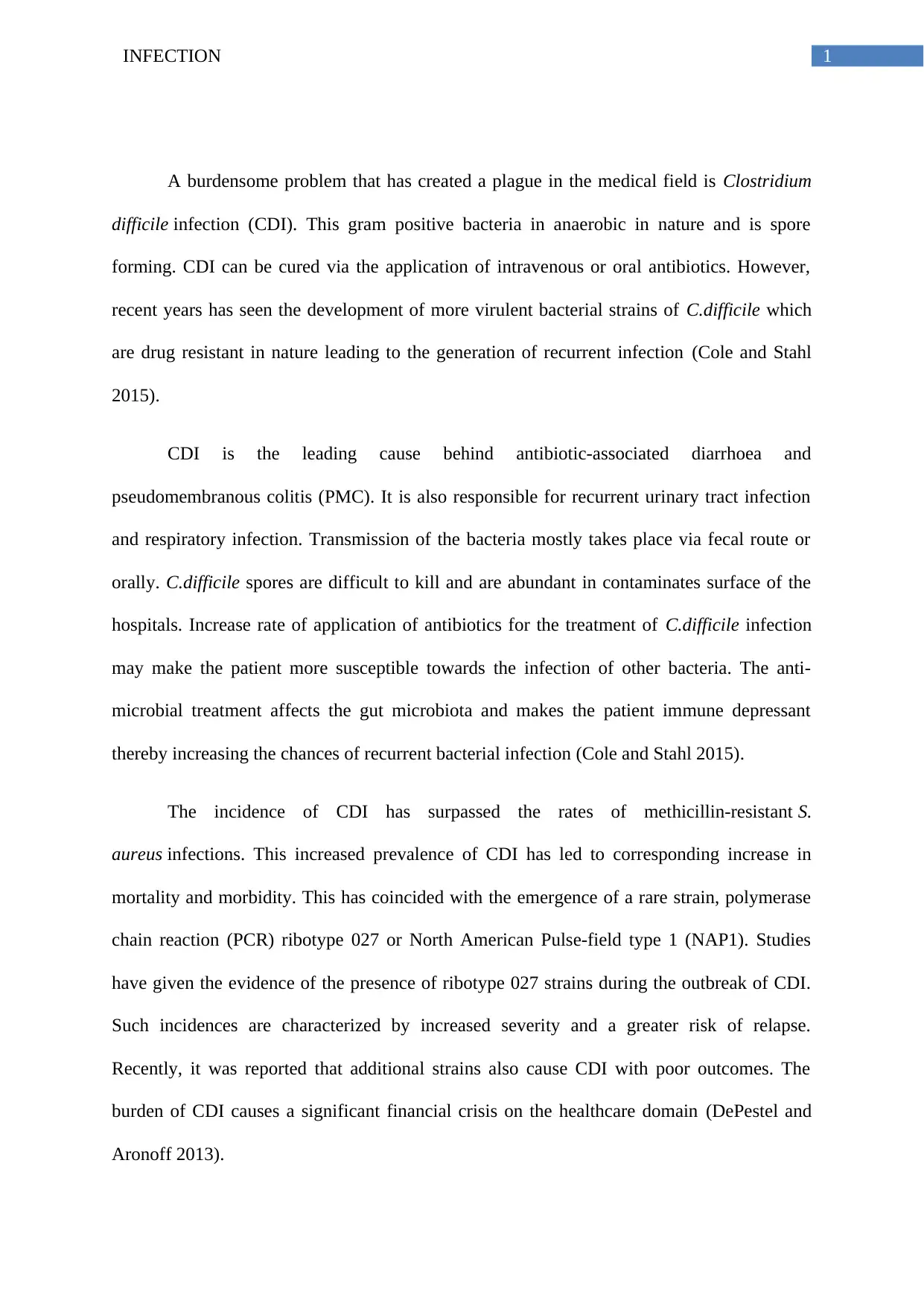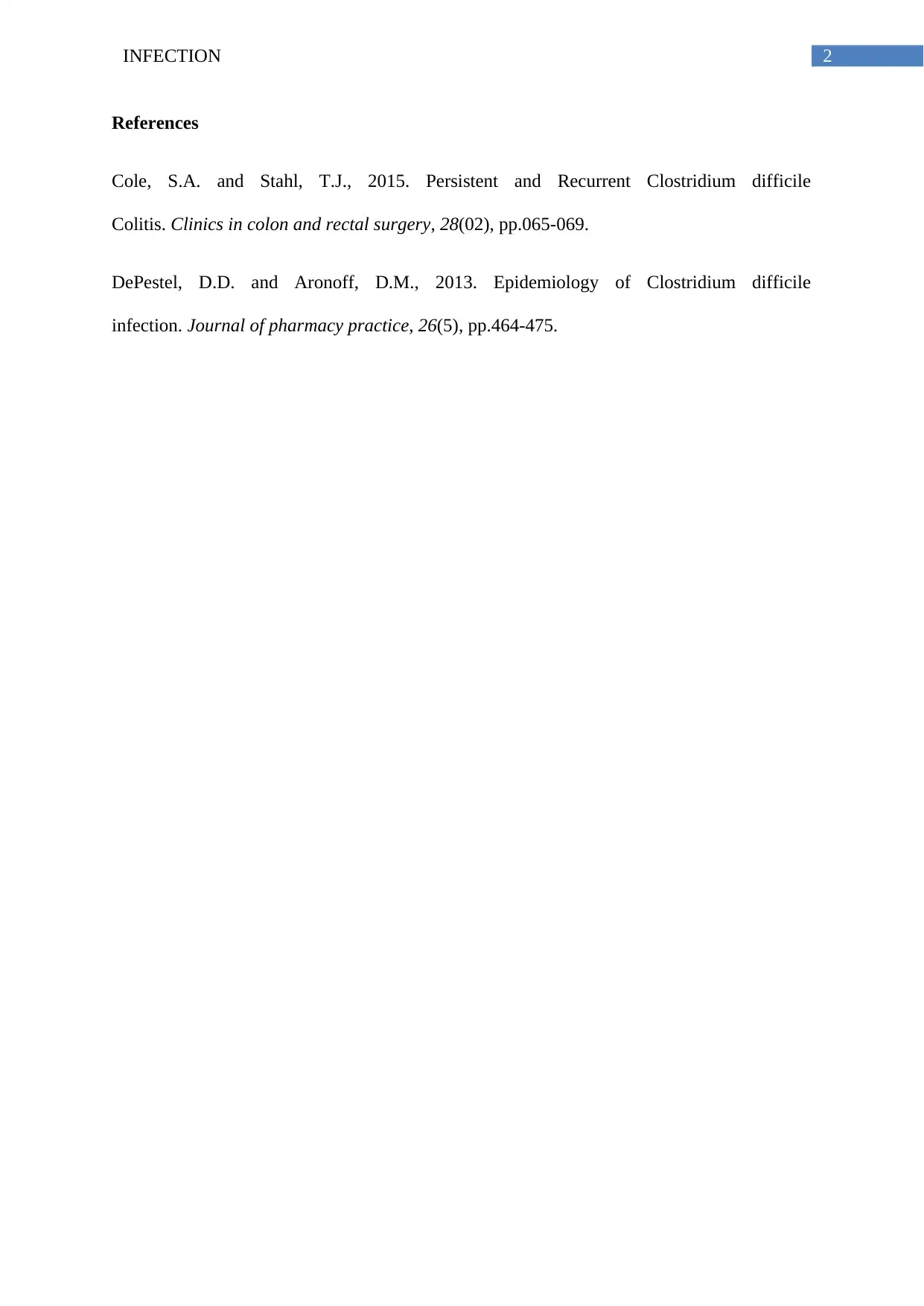Clostridium difficile Infection: Research and Analysis Report
VerifiedAdded on 2020/05/11
|3
|406
|65
Report
AI Summary
This report provides an overview of Clostridium difficile infection (CDI), a significant healthcare concern. It discusses the nature of the bacteria, its transmission, and the impact of antibiotic use. The report highlights the emergence of drug-resistant strains and the role of PCR ribotype 027. It also addresses the financial burden CDI places on healthcare systems. The report references key studies and provides insights into the epidemiology, treatment, and challenges associated with this infection. The report examines the rise of CDI, the impact of antibiotic use, and the emergence of resistant strains, emphasizing the need for effective management strategies and further research to combat this growing health threat.
1 out of 3





![[object Object]](/_next/static/media/star-bottom.7253800d.svg)